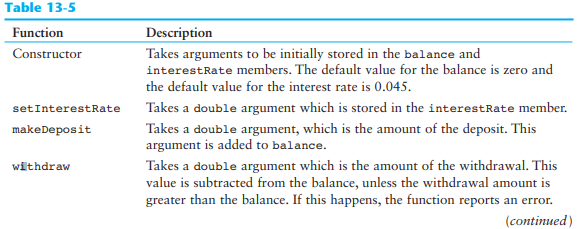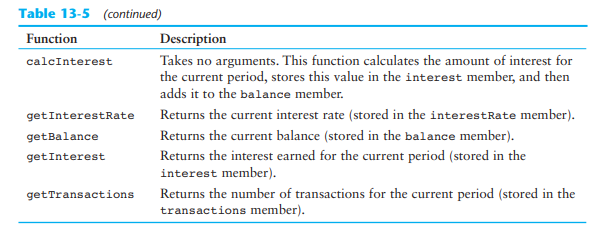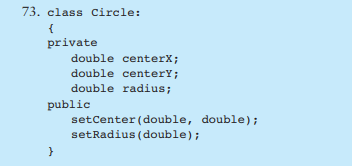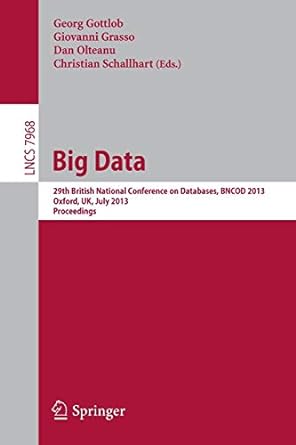Answered step by step
Verified Expert Solution
Question
1 Approved Answer
Starting out with C++ from control structures through objects, eighth edition Implement each program using as an example the descriptive tables of 13.4 and 13.5
Starting out with C++ from control structures through objects, eighth edition Implement each program using as an example the descriptive tables of 13.4 and 13.5



--Separate the programs into three files (header class, source class, main class) --Define the arrangement of objects, ask the user for the values, do not use dynamic arrays in its implementation. The main program has to contain at least three functions with arguments, a function that asks the user for the values, another that perform the calculations and finally another function that prints results. (See section 13.2 p. 767

a) Implement the code
b) Add the mutators and accessor
c) Add the constructors (with and without parameters)
Table 13-4 Variable balance interestRate interest transactions Description A double that holds the current account balance A double that holds the interest rate for the period. A double that holds the interest earned for the current period. An integer that holds the current number of transactions. Table 13-5 Function Description Takes arguments to be initially stored in the balance and interestRate members. The default value for the balance is zero and the default value for the interest rate is 0.045. Constructor setInterestRate Takes a double argument which is stored in the interestRate member makeDeposit Takes a double argument, which is the amount of the deposit. This argument is added to balance. Takes a double argument which is the amount of the withdrawal. This value is subtracted from the balance, unless the withdrawal amount is withdraw greater than the balance.If this happens, the function reports an erro. (continued) Table 13-5 (continued) Function Takes no arguments. This function calculates the amount of interest for the current period, stores this value in the interest member, and then adds it to the balance member. Returns the current interest rate (stored in the interestRate member). Returns the current balance (stored in the balance member). Returns the interest earned for the current period (stored in the interest member Returns the number of transactions for the current period (stored in the transactions member) calcInterest getInterestRate getBalance getInterest getTransactions 73. class Circle: private double centerx double centerY double radius; public setcenter (double, double)i setRadius (double)Step by Step Solution
There are 3 Steps involved in it
Step: 1

Get Instant Access to Expert-Tailored Solutions
See step-by-step solutions with expert insights and AI powered tools for academic success
Step: 2

Step: 3

Ace Your Homework with AI
Get the answers you need in no time with our AI-driven, step-by-step assistance
Get Started


